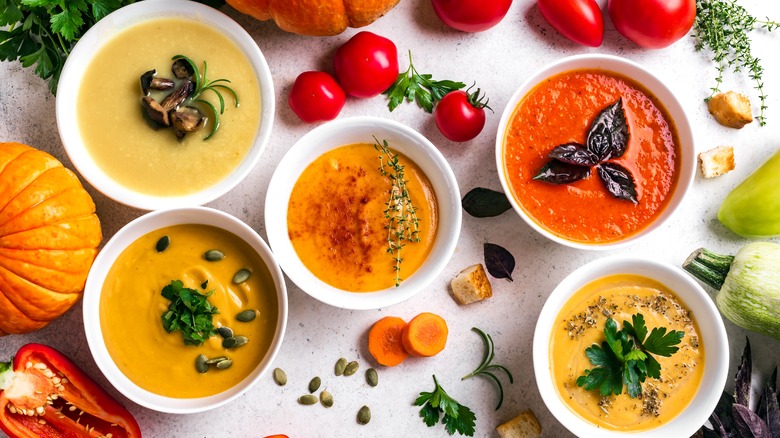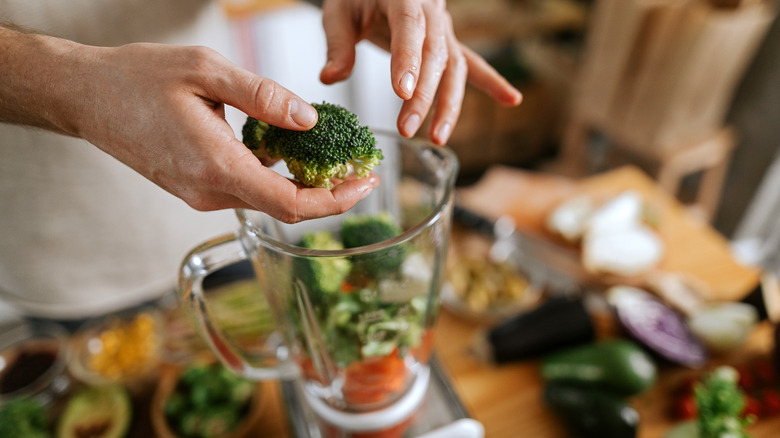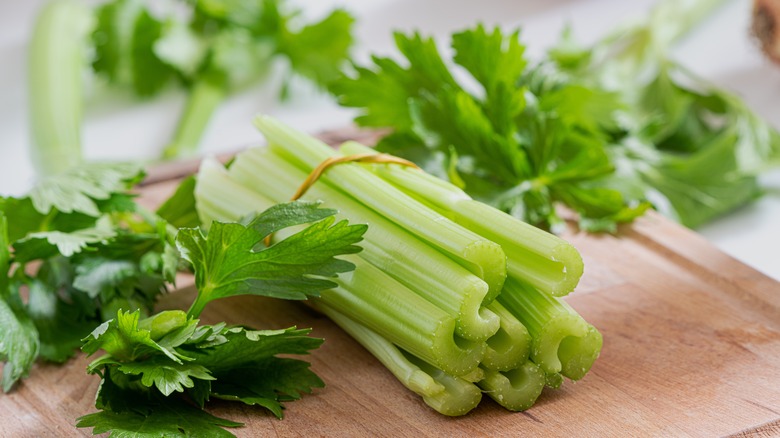How To Prevent A Watery Puree Made From Moisture-Laden Veggies
Vegetable purees are hardly just for the little ones — they can be an appetizing start to soups, a base for sauces, an easy sandwich spread, or a flavorful dip for bread or chips. Carrot and parsnip purees are classic, elegant side dishes, and pumpkin puree is essential for baking. The possibilities are endless, and nearly any vegetable can be delicious in pureed form. However, some can be trickier than others to make something palatable. When cooked and pureed, there are just some veggies that come out more liquid than paste. You don't have to avoid these ingredients entirely, though; the easiest solution is to just be careful of your cooking method from the start.
Generally speaking, vegetable purees don't start with raw vegetables. To get the smooth texture you're looking for and the best flavor, you'll need to start by fully cooking the vegetables you're going to use. But not all vegetables are created equal on this front. For the veggies that tend to carry moisture already or absorb it while they cook (think eggplants, radishes, or zucchini), you should rely on dry-heat cooking methods and avoid those that will introduce more water into the equation.
Be careful how you cook
For moisture-laden veggies that are destined to be pureed, it's wisest to avoid cooking with wet heat. In other words, stay away from preparing these watery vegetables through boiling, steaming, poaching, stewing, or other methods that use water to cook. As they cook, these vegetables will absorb the water, which will be released into your puree as they're blended and mess with the consistency.
Dry-heat cooking counters the moisture — grilling, roasting, pan-searing, and other methods that circulate hot air or allow direct contact to heat will help dehydrate and keep the excess water from ending up in your puree (thus, diluting the flavor and texture). You'll end up with a thicker, richer puree from this choice of cooking method alone.
Because these veggies can still retain moisture even with dry-heat cooking methods, you may still find yourself with more water in the puree than you'd like — and the last step is to add even more liquid for taste and texture, so you should be intentional with this ingredient for purees. When you reach this stage, though, it's best to add a non-water-based liquid like oil instead of using water-based cream, broth, or juice. Olive oil or butter will also add some richness of its own to the puree. You won't want to add too much of the liquid for moist veggies, especially if the puree is going to be eaten on its own rather than added to another dish.
Pureeing other problem vegetables
Moisture-rich veggies aren't the only difficult-but-delicious ingredients you'll encounter in the world of purees. Some vegetables have a perfect texture for pureeing (firmer veg like winter squashes or root vegetables) while others are nearly impossible (like lettuce). There are some, though, that fall in the middle and present a challenge that can be overcome. For example, fibrous vegetables like broccoli or celery are flavorful but need just a little more care. Unless you have a high-powered blender or food processor, veggies like these tend to leave behind stringy fibers or coarse seeds or pieces.
Some of this difficulty can be mitigated at the start — when you're preparing the veggies to cook, chop them up to even sizes and remove the seeds and fibrous parts before you begin. If you find that there are still bits left behind once you've pureed, there's no need to start picking fibers out individually. Put the puree through a wide-mesh sieve to strain out the rough parts and to create an even smoother texture.


